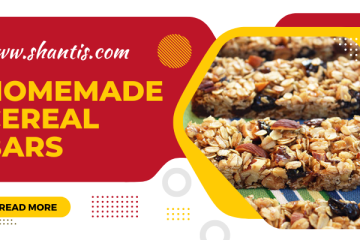Are you looking for a way to make your business stand out and be memorable? Have you been thinking about ways that will help you grow your customer base? One of the best ways to do this is with an incredible product feel. This blog post shares five printing and finishing techniques that will give any business an edge over its competition. These techniques are sleek, modern, and all-around great for improving customer experience!
Printing and finishing techniques are vital components of any successful packaging project. The quality of your print job will directly affect the overall look and feel of your package. Printing is not just for getting a message out. It can make or break an entire product’s presentation. In this blog post, we’re going to talk about some standard printing techniques that you may want to consider when designing your next project.
There are many benefits of printing and finishing techniques for great packaging. One is that it can create a more durable, long-lasting feel. Another benefit is the different textures you can achieve with finishes like embossing or debossing – this technique adds depth to your design. There are still other benefits too! Find out what they are in this blog post on printing and finishing techniques. Companies are adopting new printing techniques to make custom cbd packaging for businesses.
Embossing or Debossing – to add a tactile feel and create an impression:
When you want to create an impression of luxury, adding texture is a great way to go. You can do this by embossing or debossing the surface of your product packaging. Embossing uses pressure to force the material into an indented shape on the surface of your design. On the contrary, debossing takes place when you press a sunken area onto your package’s surface. These techniques can be used with many materials and give you great control over the final product. They’re also not too tricky to produce either!
Shrink Wrap or Stretch Wrap – adding visual appeal:
Adding shrink wrap or stretch wrap is one way to complete the look of your packaging solution. Shrink wraps are less than 3 millimeters thick and are perfect for items that require branding throughout their entire life cycle (as opposed to a shorter period). This added protection helps ensure brand cohesion as well as keeps products intact.
Die Cutting and Engraving is good to make shapes out of paper, cardstock, or other materials:
An excellent way to engrave shapes on paper is with the help of a die-cutting machine. These machines are great because they can cut through most materials. However, this means you don’t have to worry about the shape being too thin. Paper, cardstock, and shrink film are all.
Lamination is excellent for waterproofing your design:
A great way to increase the product feel of your packaging solution is through the use of lamination. Lamination is a process where the surface of one material (paper, cardboard, etc.) is covered by another one (plastic). The benefit? Waterproofing! With this technique, you can protect the moisture content within paper or cardboard so that it doesn’t affect the quality of your product. Having wet hands does not affect product touch because it’s sealed away!
Letterpress is best where the text is raised from the page after printing:
Letterpress is best on luxury and greeting cards where the raised lettering gives a rich tactile feel. It’s also viral for wedding invitations, particularly those with elegant calligraphy fonts. This process puts pressure on a metal printing plate that is inked and then printed onto the card stock. This creates crisp images that are solid, not raised, but sharp enough to create a strong impression. For cards that require softer colors, stenciling is often used as an alternative printing method. With this technique, a negative image of your design is created by cutting it out on the reverse side of the plate. Then the ink is applied to just around the edges of your image using oil-based ink rollers.
Printed cards with varnishing and giving attractive look:
Varnishing protects your designs from water damage and smudging. It also gives your product higher durability, making them suitable for more bulky, weighted products like mugs or notebooks. Varnishing your project with gloss or matte finish will allow you to see your design pop.
Hot Foil Stamping – a decorative process that involves applying foil onto a surface:
In the hot foil stamping process, a metal plate is covered with a thin sheet of gold or other material. The metal plate is then heated to approximately 1,000 degrees Fahrenheit. Furthermore, metal is pressed onto the paper that we want to print. The heat from the metal transfers onto the paper, and this causes a chemical reaction with the ink. The ink is then absorbed into the material, creating a raised design. This is why other packages like tincture packaging have good decorative design and style
We can do Hot Foil stamping on any product you could imagine cups, notebooks, phone cases, etc. However, it comes to life when used on thicker products such as mugs or even boxes!
Pantone Matching System (PMS) – a standardized color system that enables designers and buyers to see accurate colors quickly:
The PMS is an industry-standard color guide for printing inks, which consists of 1,114 unique colors. It helps printers anticipate how particular combinations of CMYK (cyan/magenta/yellow/black)
Spot UV Coating is the latest and awesome print technique these days:
It is one of the most popular print techniques these days. It has some benefits like we can use it on any substrates, and also its smooth finish makes your products look sleek, attractive, and shiny. Spot UV coating is a popular finishing option for printed display boxes. It gives the packaging a striking look, and it’s well worth the small upcharge to add this treatment to your design.
How exactly a spot UV coating works:
It is a photo-polymer-based protective coating that gives a glossy and luster look to the printed product. If you want your packaging or product design to stand out from the crowd, this technique is an excellent option. We can apply it on both mattes and high gloss surfaces, and it doesn’t alter the feel of the surface like some other techniques such as embossing.
You should also know about Matte Lamination:
Matte laminated sheets provide a smooth finish with no shine or glare, giving your designs a classy look. The most common use of this sheet is for business cards and brochures, but you can also consider it for packing boxes and folders, among many.





